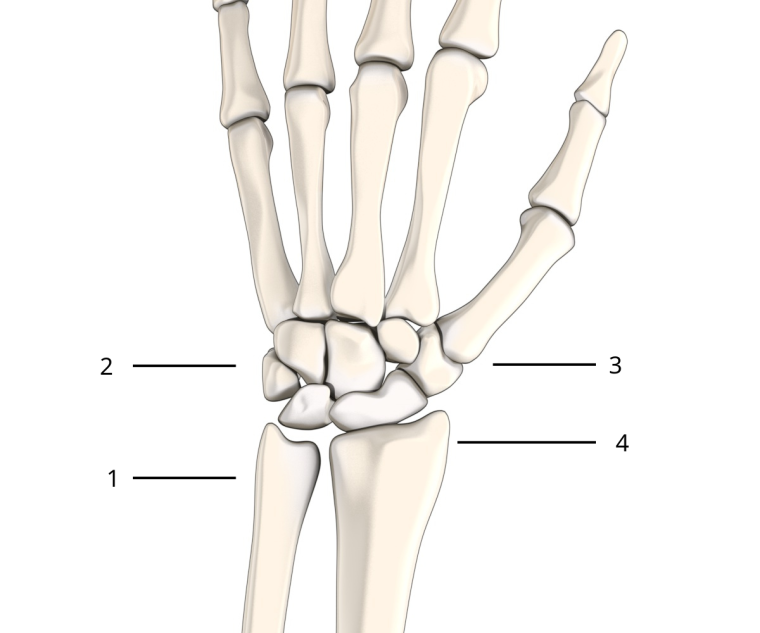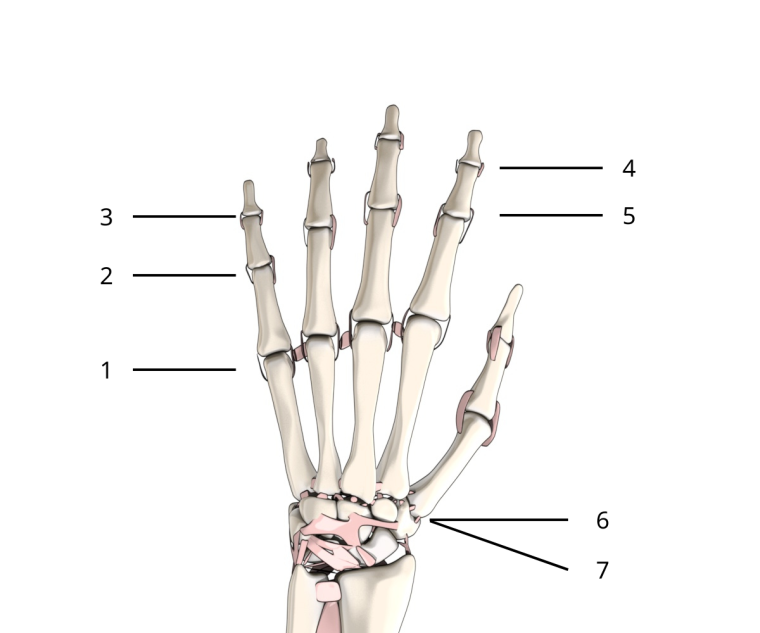
Hand surgery
Within the field of hand surgery, degenerative and rheumatological joint diseases such as infections, injuries and tumours are treated surgically and conservatively.
Many surgical procedures on the hands are performed on an outpatient basis. In the case of major operations, a preliminary examination is carried out in the clinic beforehand.
Osteoarthritis of the wrist
Osteoarthritis of the wrist can be treated conservatively or surgically. In conservative treatment, the thumb is stabilised with the aid of a splint, which relieves stress on the joint. Cortisone injections and deep X-ray radiation can be used to alleviate pain. However, all of these measures only act as pain relief; they cannot prevent the osteoarthritis from progressing.
To treat the osteoarthritis itself, surgical intervention is necessary.
The procedure is performed on an inpatient basis under partial or general anaesthesia. During the procedure, the bones that make up the saddle joint are removed. A new joint is then constructed using tendons taken from the patient’s body.
A plaster cast is worn for four weeks after the operation. It can take up to 12 months to regain full wrist function.
Osteoarthritis in the finger joints and thumbs
The first signs of osteoarthritis in the digits of the hand are having stiff fingers or thumbs in the morning. It is difficult to clench the fist and the movement causes pain. Pain in the fingers and thumbs even occurs during periods of rest. Indications that the osteoarthritis has progressed include swelling and very warm joints.
Osteoarthritis can affect the following joints in the hand:
- thumb saddle joint (rhizarthrosis)
- terminal finger joint (Heberden’s nodes)
- middle finger joint (Bouchard’s nodes)
Osteoarthritis of the thumb and wrist occurs more frequently, while osteoarthritis of the middle finger joint is less common.
An X-ray is carried out to determine the extent to which the osteoarthritis of the fingers and thumb has progressed. It is not usually known why osteoarthritis occurs in the fingers or thumbs, which is why we usually treat the symptoms rather than the cause. Ergotherapy helps to relieve the joints and the fingers or thumbs. Special medications are used for acute pain.
Surgery is necessary when other therapies are no longer helpful. During the operation, the affected joints are stiffened or replaced with finger joint prostheses. The method of treatment used depends on which joint is affected and the types of activity the affected person engages in.
Terminal finger joints are usually fused because they contribute less to the overall mobility of the finger. Finger joint prostheses are used for the middle finger joints if the affected patient’s work does not involve activities that put a lot of strain on the fingers.
In the case of the thumb saddle joint, the inflamed tissue is removed by arthroscopy and the surface of the joint is processed to restore its smoothness. If the osteoarthritis in the thumb joint is more advanced, a so-called resection suspensionplasty is carried out. During this procedure, a carpal bone is removed. The thumb is stabilised using sections taken from the abductor tendon, which relieves stress on the joint.
Carpal tunnel syndrome
Carpal tunnel syndrome is a pinched nerve in the tunnel of the wrist. Symptoms of carpal tunnel syndrome include swollen or stiff fingers in the morning. Those affected also complain of tingling in the palms of the hands, which extends to the fingers.
In order to rule out other diseases when diagnosing carpal tunnel syndrome, the doctor tests the electrical conductivity of the nerve. This type of diagnosis is largely painless and is performed by a neurologist.
There are two surgical procedures to treat carpal tunnel syndrome. In open surgery, the carpal ligament is severed through an incision on the inside of the hand. In endoscopic surgery, small incisions are made in the skin of the wrist and palm of the hand, through which a camera probe and a tool to cut the carpal ligament are inserted.
The procedure is usually performed on an outpatient basis under local anaesthesia. The stitches are removed two weeks after the operation. Depending on the type of job you do, it may take up to four weeks before you can return to work.
Wrist ganglion
Ganglion cysts are benign soft-tissue lesions commonly found on the hand or wrist. These soft synovial membranes fill with fluid, causing a bulge to appear. The exact causes of ganglion cysts are not fully known. They may appear as a result of weak connective tissue, a sprain or irritation in the joint. Ganglion cysts also commonly occur as a result of osteoarthritis. An ultrasound examination is used to provide information about the extent of the cysts and clues as to the possible cause.
The following treatment methods are available:
- puncture and aspiration of the fluid
- resection – removal via open surgery
- arthroscopy
After the operation, the wrist can be moved as normal. It takes up to ten days for the wound to heal.
Dupuytren’s disease
Dupuytren’s disease is a disease of the palms of the hands that affects the connective tissue. It affects people over the age of 50, whose connective tissue changes in such a way that knots and strands appear in the palms of the hands. It is not usually painful, but as the disease progresses it can result in the fingers no longer being able to be stretched. As these tissue changes can also occur around nerves and vessels, sensory disturbances or circulatory disorders may arise.
Dupuytren’s disease can be treated conservatively and surgically.
With conservative treatment, a needle is used to weaken and disrupt the affected strand of connective tissue. This immediately improves the patient’s ability to straighten their fingers. However, these problems may reappear after two years.
With the surgical treatment, the diseased connective tissue is removed from the affected areas. This procedure, known as partial fasciectomy, also carries risks, as nerves or blood vessels can be damaged.
After the procedure, the finger is fixed with a splint and immobilised for six to eight weeks.
Hand injuries
Plastic surgery – particularly hand surgery – also includes the treatment of open and closed injuries. Open hand injuries are any injuries to the hand where the skin has been damaged. Bone fractures are usually closed injuries.
Open injuries that can damage the skin must be treated surgically within six hours. In the case of closed injuries, the procedure is planned in advance by the surgeon.








